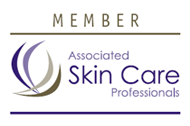Frequently Asked Questions
How long does the hair need to be?
The hair needs to be 1/4-1/2 inch long. If you come in too soon, you may not be able to get waxed and I will have to reschedule you. I have found that 2 1/2 weeks after your last shave seems to be the sweet spot. Some parts of the body, like the legs, the hair comes out easier if it's grown out 3-4 weeks after your last shave. It's your preference though. If the hair is extra long, please do not trim and I will decided if it needs it. You could risk trimming the hair too short, resulting in the wax not being able to grab the hair.
How should I prepare for my wax?
- Let the hair grow to the length mentioned above.
- Dry brush the day before to help prep the hair for removal.
- Wear loose fitted clothing to let the skin breathe after your wax.
- If you have a low pain tolerance, taking ibuprofen 45 minutes before your appointment, will help reduce the pain.
Can I get waxed during my menstruation?
Yes you can, but please make sure you have a tampon or cup in during your service. Also note that the skin may be more sensitive during this time, so you may feel it hurts more than normal.
What is the recommended aftercare?
You will want to avoid anything that causes heat or friction to the area for a minimum of 24 hours. Some examples include: tight clothing, excessive sweating, cardio, saunas, hot tubs, baths, hot showers, pools, and sex. You will also want to avoid direct sunlight, tanning beds, harsh chemicals, acids, exfoliants, fragrances, and dyes. After 72 hours you will want to start exfoliating at least 2 times a week, finishing with a serum to prevent ingrown and a gentle moisturizer.
What is a Vajacial and how do I know if I need one?
This treatment is recommended 1-2 weeks after your waxing service. It helps to improve ingrown hairs, bumps, breakouts, discoloration, hyperpigmentation, firm, restore and rejuvenate the skin in the mons pubis and the creases of the thighs. This service includes cleansing, exfoliating, extractions, a mask, serums and a moisturizer. If you struggle with any of these concerns, this treatment is recommended for you. *Please note this service is only performed on the female anatomy*
How do I know if my skin barrier is damaged or healthy?
First ask yourself, what does my skin look and feel like? Is it red, dry, flaky, or itchy. Does it burn, tingle or feel sensitive or tight when products are applied to my skin? Do I have rashes or inflammation? If so, you are in need of repairing. Getting your barrier back can take anywhere from a couple weeks up to 6 months, depending on the amount of damage that has been done. If you have a healthy skin barrier you will have flake-free, smooth skin. You don't normally feel anything when products without actives are applied to the skin. Calm skin is healthy skin.
Truly how important is facial home care?
It's very important, like 80% important, then the other 20% is spent with me! You can't expect results overnight and you have to be willing to put in the effort. Consistency is key, which you will hear me say over and over. You don't have to buy all the products out there, but your key products you want are a cleanser, moisturizer and sunscreen.




